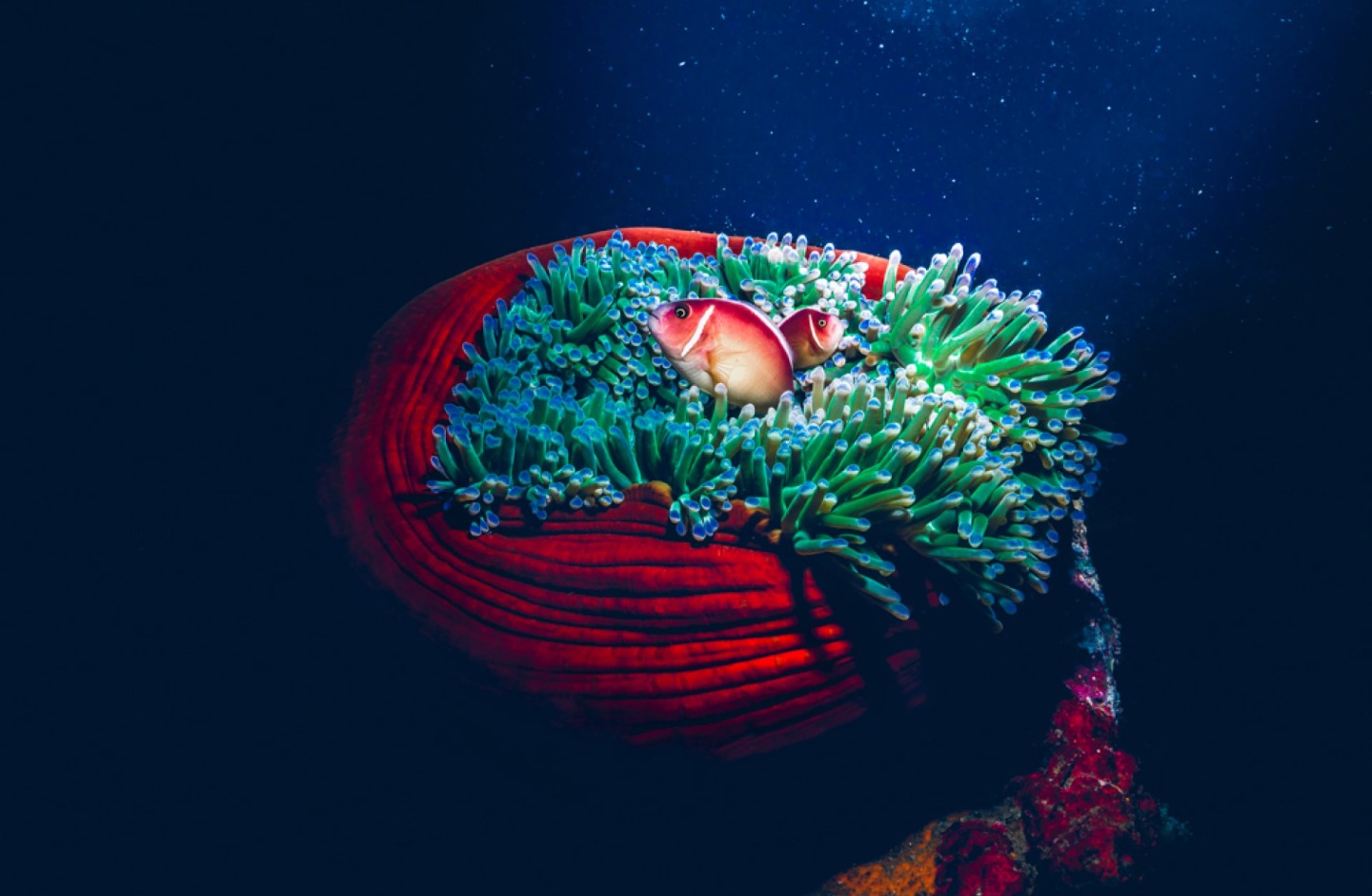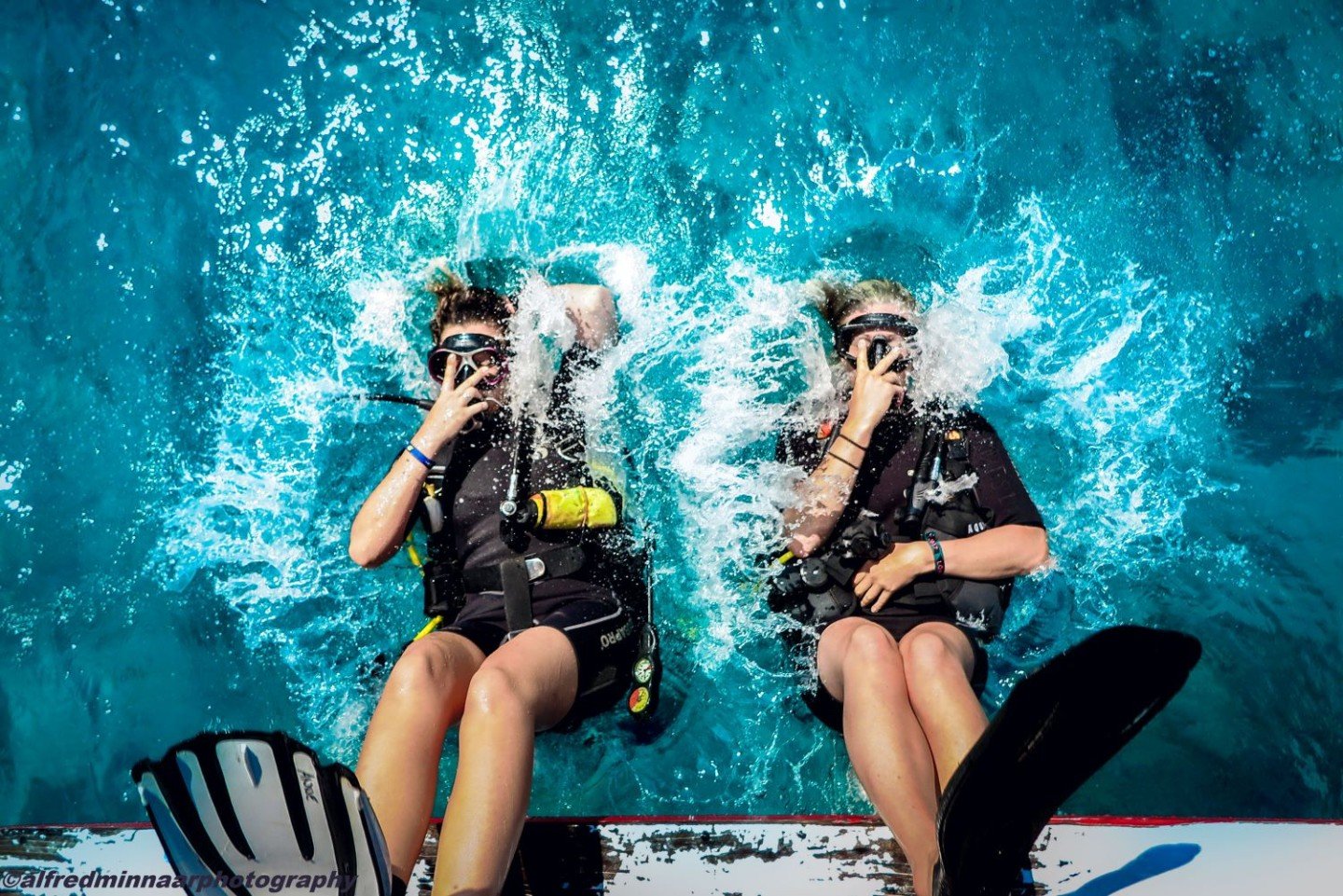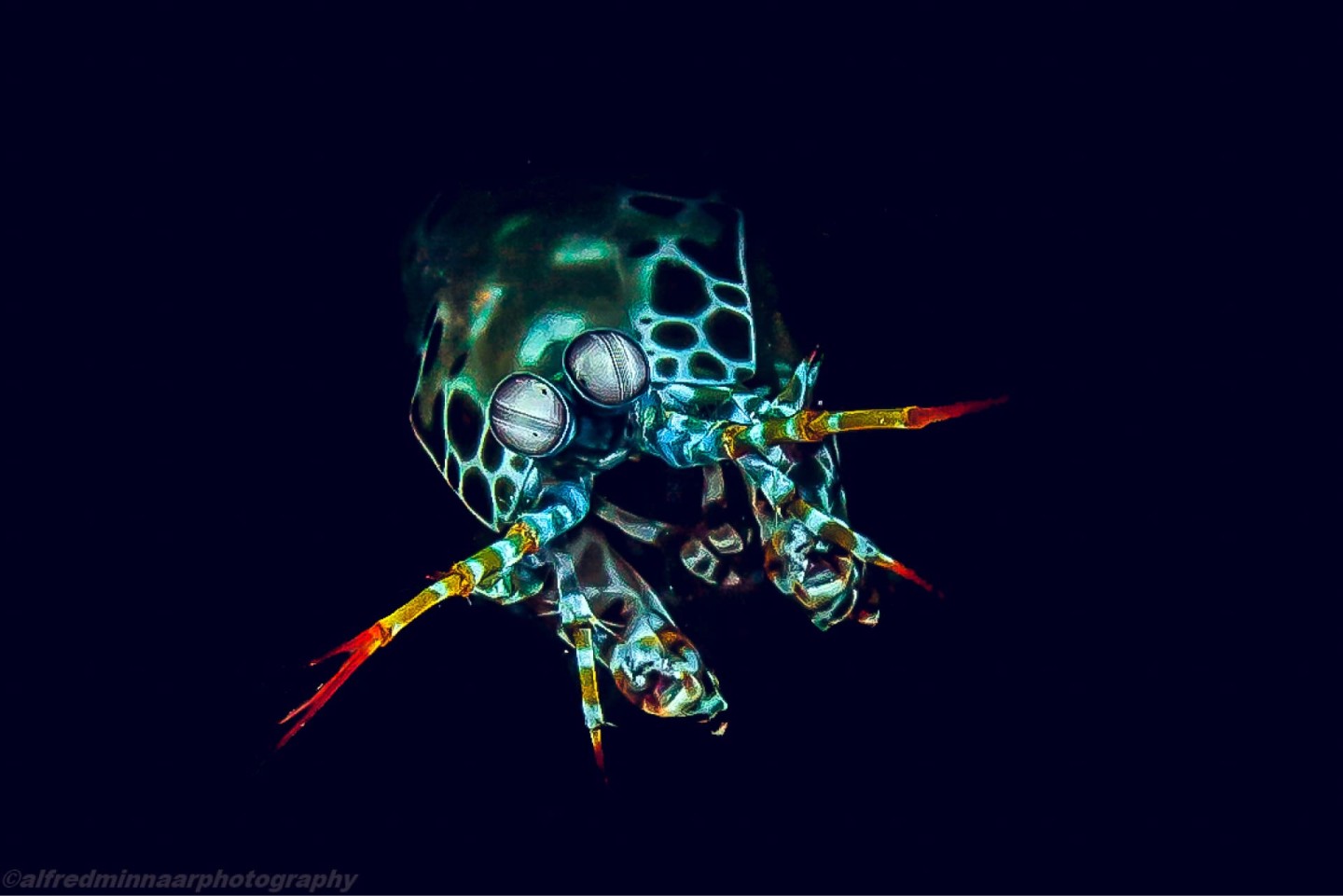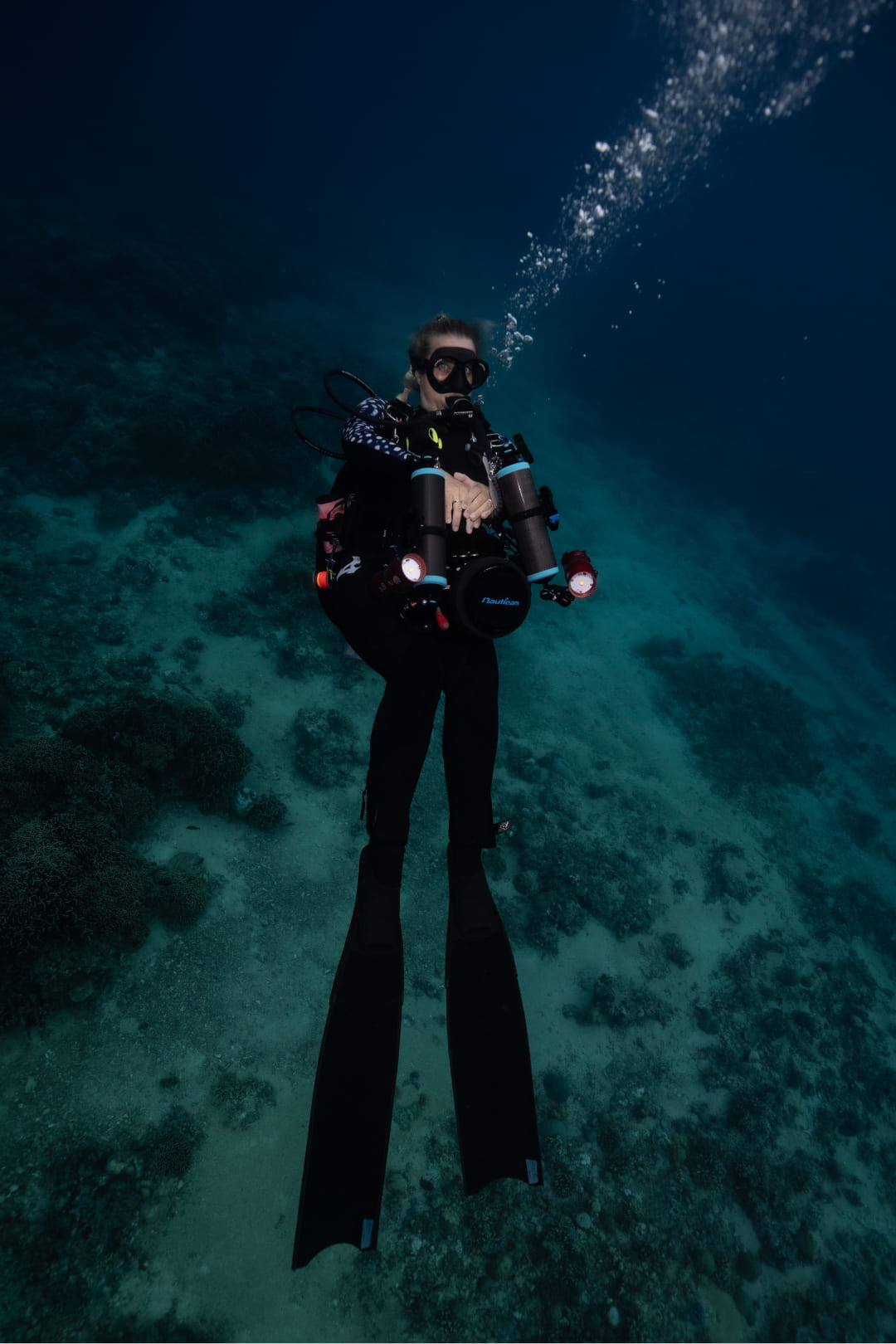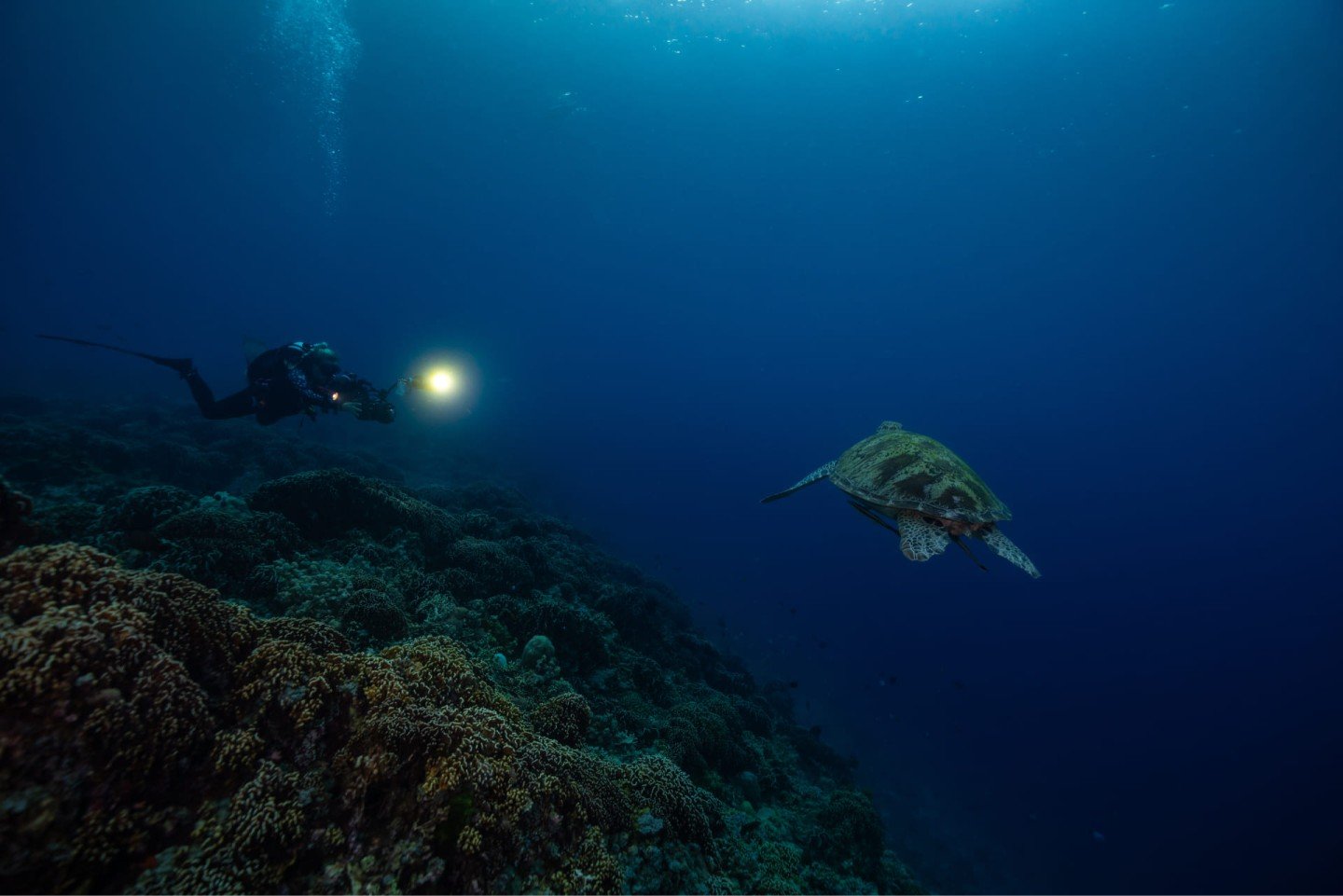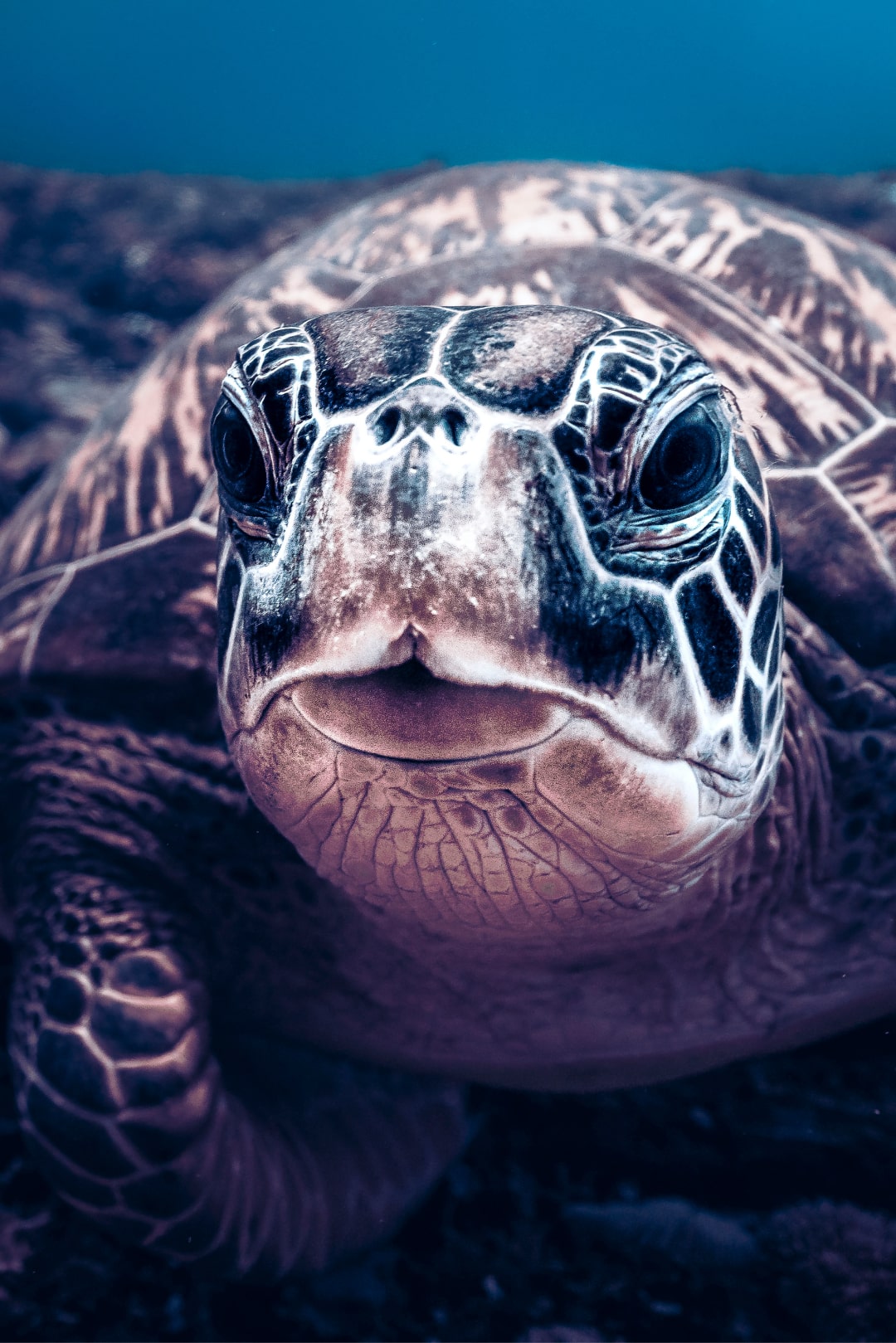#5: Use a Flash/Make Use of Ambient Light
Learning to use your internal flash, strobe, or ambient light correctly is a must if you want to capture photos that aren’t washed out in shades of blues and greens.
If you’re using your camera’s internal flash as your main source of light set it to the forced flash mode. This will ensure that it always goes off. You also want to set your camera’s white balance to auto. You won’t be able to manually adjust your white-balance when using your camera’s flash (internal or external), so this step is key.
If you decide you want to take your photography to the next level, a strobe should be your next investment. Aside from providing the obvious advantage of better illumination, strobes will also allow you to reduce the presence of backscatter in your photos. You can do this through the proper positioning of your strobes. You should have them as far away from your housing as possible and have them angled so they do not shine directly on your subject.
Alternatively, if you prefer to use ambient light only when shooting, you will need to use your camera’s manual white balance settings. To do this, take a photo of something white at the depth you will be shooting. This will allow your camera to adjust its colour settings accordingly and should eliminate some of the blueness that will result while shooting underwater. Remember - as you descend, more and more colour will be lost. To correct this you will need to adjust your white balance settings each time you change your depth.
TIP: If possible, stay shallow when shooting with ambient light. The shallower you are, the more sunlight will be able to penetrate. This will allow you to achieve well-lit photos without having to reduce the shutter speed.
TIP: Don’t forget to adjust your strobes! Many divers fall into the habit of setting their strobe(s) at the beginning of the dive, and then leaving them in that position for the next hour. You paid the big bucks for this add-on - so make sure you use it to its full extent. Most, if not all arm systems have adjustable segments that allow for easy movement of the strobes. Take advantage of that! Not every subject will require the same lighting - so use your strobes and adjust them to your benefit.


